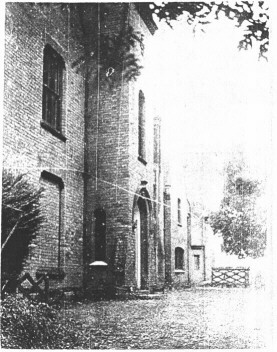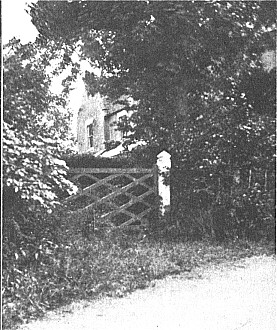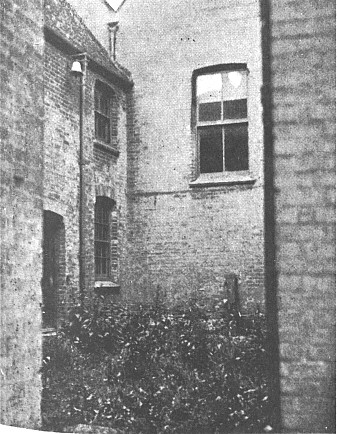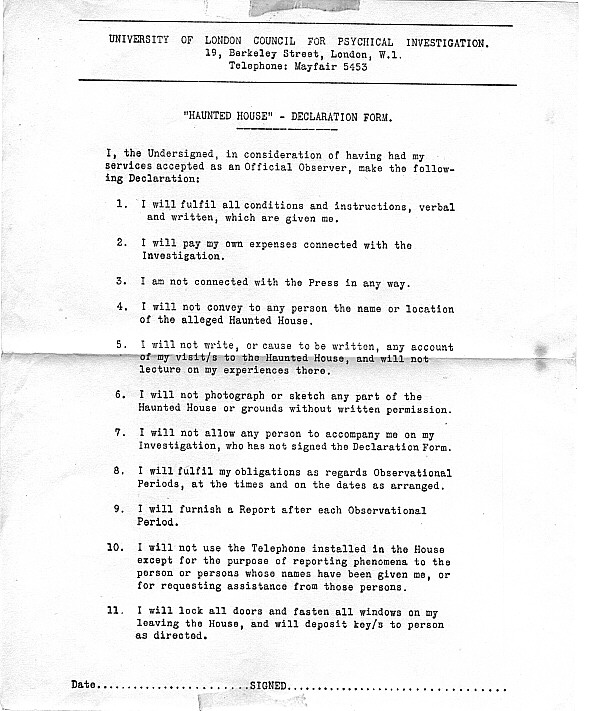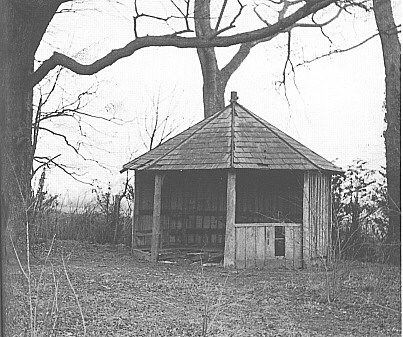|
The Price Tenancy |
|||||||||||||||||||||
|
|
In March 1936, the Rev. Alfred Clifford Henning became the thirty-eighth rector of Borley, succeeding Lionel Algernon Foyster who had left the parish in the October of the previous year. By the time of Henning's induction to the Borley living, the parish of Borley had been combined with that of neighbouring Liston and the new Rector took up residency at Liston Rectory. Henning had successfully negotiated with the Church authorities that Borley Rectory was unsuitable for his domestic needs as, unlike Henry Dawson Ellis Bull with his family of fourteen children, the new cleric and his wife had only one son, and the intention was to use the much larger building for specific parish activities and meetings rather than as his home. At the time he accepted the appointment, Henning was unaware of the building's unenviable reputation, and since the departure of Lionel and Marianne Foyster, Queen Anne's Bounty - a fund formed by Queen Anne in 1704 for the augmentation of the livings of the poorer Anglican clergy - had been trying to sell the place. Harry Price had last visited Borley Rectory in October 1931 and had left on bad terms with the Foysters after having told Lionel Foyster to his face that he thought the Rector's wife was responsible for any paranormal activity which may have been occurring. This was certainly Price's view of the Foyster period in February 1936 when he published his Confessions of a Ghost-Hunter (Putnam & Co.) in which he devotes a chapter to Borley Rectory (albeit at that time heavily disguised), although in the same book he was not so dismissive of the things he had experienced in July 1929 when the Rev. Guy Eric Smith and his wife Mabel had been living at the Rectory. In his chapter on 'K- Manor' as he calls the Rectory, he states that short of living in the Rectory, he was not in a position to investigate it further. In The Most Haunted House in England (Longman, Green & Co., 1940), his first book on Borley, Price states that he kept in touch with the goings on at Borley in the years after the departure of the Foysters, presumably through contact with the Misses Bull, the Rev. Henry D.E. Bull's sisters, and was aware that if he wanted to, he could have bought the place 'for a song' as he describes it. In 1937 he was still interested in the idea of some form of investigation and wrote to Miss Ethel Bull asking to be put in touch with the current owners. His intention was to rent Borley Rectory in order to carry out the prolonged study of the building which he had been unable to effect at the time of the Smiths. Ethel Bull made the necessary introductions and on 19th May 1937, Price went to Borley to meet the Rev. Alfred Henning.
If Harry Price wanted to thoroughly investigate the hauntings at Borley, and as the Rectory was so cheap, why didn't Price simply buy the place outright rather than become its tenant? If he was so impressed with the 'Most Haunted House in England', surely it would be to his advantage to actually own it as by doing so he would be able to study it in whatever way he wished and have a major money-making investment as his own personal property. This is one of the main questions subsequently levelled at Price by critics of the way that he handled his whole investigation of Borley. The reason given by his detractors that Price never bought Borley Rectory when he had the chance was because he never believed it was haunted in the first place and had no intention of wasting money, no matter how little, on buying a worthless investment. He was at Borley only with the intention of making money out of its singular reputation. By renting it for a year he would be able to cut his losses (he agreed a figure of £30 for the twelve month tenancy with Henning and the Borley cleric agreed to pay the rates) if he was unable to make anything out of the venture. As it happened so his critics have said, things turned out very well indeed. Although this appears clear cut, the actualities were somewhat different. Borley Rectory was a huge rambling building in a poor state of repair situated in equally extensive untended grounds. There was no electricity and water had to be hand-pumped from a well. If Price (or anyone else come to that) was to live there and direct the investigation himself it would have required a considerable initial outlay to make the Rectory sufficiently habitable for the purpose after the two years in which it had been standing empty since the departure of the Foysters, followed by regular maintenance to the building itself and to its grounds which would have meant more continual expense. Compare the earlier situation of the Rev. Smith and his wife who were appalled at the state that the Rectory had fallen into when they took up the living in 1929 after the building had been left empty for eighteen months following the death of the Rev. Harry Bull in June 1927 as an example of how such a building can quickly get out of hand. Alfred Henning himself makes the comment in his Haunted Borley that the Rectory needed 'an army of servants inside to say nothing of gardeners outside'. If he had decided not to reside at the Rectory himself, Price's own home in Pulborough, West Sussex was a hundred and fifty miles away which would have entailed extensive travelling not only run the investigation personally but also to maintain the upkeep of his property and he would have had to of possible engaged semi-permanent house sitters to keep the place in order. The logistics of maintaining a large property in a remote part of the country was the main reason that Price decided to rent Borley Rectory rather than purchase it.
Once he had agreed the terms of his twelve month tenancy of the Rectory with the Rev. Henning, Price drew up his plans for his year long study of the building. His intention was to distance himself personally from the investigation so that he would be able to obtain as he termed it 'independent evidence' of the Rectory's apparently paranormal nature. Rather than involve spiritualists, mediums and even members of his own organisation, the University of London Council for Psychical Investigation, he wanted to recruit a team made up of intelligent, educated and competent people from different walks of life who would be unbiased and not prejudiced in their reporting. On 25th May 1937, Price placed an advertisement in the Personal Column of The Times requesting applications from interested persons. It ran as follows:- 'Haunted House. Responsible persons of leisure and intelligence, intrepid, critical and unbiased, are invited to join rota of observers in a year's night and day investigation of alleged haunted house in Home Counties. Printed instructions supplied. Scientific training or ability to operate simple instruments an advantage. House situated in lonely hamlet, so own car is essential. Write Box H.989, The Times, E.C.4.' With these few lines, Price would enable the detractors who came to the Borley case after his death to level their most damming criticisms against him. Even though Price interviewed the two hundred potential applicants personally, in the end reducing their number to forty-eight basically hand-picked persons whose backgrounds included engineering, the armed forces, the civil service and the medical profession, by sending what has been described as a band of 'amateur ghost-hunters' (in a recent television documentary) to Borley rather than say members of the Society for Psychical Research, Harry Price has been accused of creating the perfect situation from which he could draw material in order to write his money-spinning best sellers on the Borley saga. By distancing himself from the operation he could not be accused personally of directly influencing events, but by the use of his 'printed instructions supplied' was able to use the power of suggestion to create the desired reports of ghostly activity. The printed instructions referred to was a slim eight-page pamphlet titled The Alleged Haunting at B----- Rectory - Instructions for Observers which contained details of how to carry out the observational periods in the Rectory and its grounds, report writing and procedures for dealing with phenomena, as well as a history of all the alleged paranormal events said to have occurred at Borley since the Rectory was built in 1863. Each of the official observers was also obliged to sign a declaration form (see below) that they would carry out all of Price's instructions and directives to the letter. To be fair to Price, he was bound to be criticised whichever way he approached the investigation of the Rectory. If he lived in the building and directed the investigation in person he would have been accused of directly faking phenomena and falsifying events (which did occur several times following visits to Borley), whereas by carrying out the experiment in the way he did he was charged with manipulating the events at a distance to create a shrewd money-making venture.
Access to the Rectory was made via the key holders, Mr and Mrs Arbon, a steam-roller driver and his wife who lived in the Rectory Cottage adjacent. One room, the former library on the ground floor was set up as an operations room in which the 'official observers' as they have come to be known could have their meals, write reports or take breaks from their duties, either reading or sleeping. The Base Room was equipped with a folding camp bed, a table and seating benches, a paraffin lantern, a spirit kettle, cutlery, non-perishable foodstuffs and a selection of books. The observers booked their periods to visit the Rectory with Price who would then write to the Arbons informing them to expect people at a certain time. If this was not possible then the observers presented the Arbons with a letter of introduction from Price on their arrival. Most of the visits to the Rectory occurred over weekends when most of Price's compliment of investigators were available although the building was occupied at other times, on one occasion for a whole week by one observer, Mark Kerr-Pearce (see below). A typical period of duty as an official observer at the Rectory involved taking regular tours of the building and its grounds during the course of each day and night as well as watching and listening for any unusual activity at particular prescribed periods. Price requested that an observer take up position in the large summer house adjacent to the lawn for a full half hour before and a half hour after dusk in order to watch the part of the garden known as the 'Nun's Walk' where the apparition of a robed figure had been seen by members of the Bull family over the years. Another stipulated session was to sit in the Blue Room (Room 6) on the First Floor in complete darkness for one whole hour. Price had held an impromptu séance in this room (in which the Rev. Harry Bull had died in 1927) during his first visit to the Rectory in 1929 and it was regarded as a particularly haunted room. Once each observational period was over, each of the observers was required to write a report of their visit to the Rectory and submit it to Price at the Berkeley Street offices of the University of London Council for Psychical Investigation. These reports are preserved in Price's 'Borley dossier' which is now part of the Harry Price Collection at the Senate House in London. By looking through them it is clear that attitudes to the task in hand varied across the forty-eight people that were chosen to investigate the 'Most Haunted House in England'. Some take the form of brief letters which give matter-of-fact descriptions of the time spent at the house, while others are detailed (to the minute in some cases) accounts of each visit, taking into account the movements of the observer, temperature readings in different parts of the building etc. Two of Price's official observers took their responsibilities very seriously indeed. They were Sidney H. Glanville, a consulting machine tool engineer's agent (most often described as a civil engineer - the rather lengthy title given here is taken from Glanville's death certificate) and Mark Kerr-Pearse who was later to take up the appointment of British Pro-Consul at Basra. Both men (Glanville was often accompanied by his son Roger, a Squadron-Leader in the R.A.F.) spent many hours, both day and night, at the Rectory. Sidney Glanville was the first person to respond to The Times advertisement and although he has become known as Price's Chief Observer at Borley he was not in charge of the investigation as is sometimes claimed. During his initial visits to the Rectory he carried out a measured survey of the building from which he produced the floor plans which Price (and subsequent authors on the case) would use to illustrate his Borley books and his extensive notes on the investigation, together with correspondence and photographs was ultimately compiled into a private report which again Price utilised when he sat down to write The Most Haunted House in England which was published in 1940. Glanville's report, known as the 'Locked Book' due to it being bound and fitted with a Brahma lock by Price, has a controversial history in itself and the original document is now in America. Although he was not able to carry out his observations for the full twelve months of the tenancy, Mark Kerr-Pearse justifiably met the 'intrepid' requirement of Harry Price's newspaper advertisement. In the time that was available to him, mainly in the opening months of Price's tenancy, he spent repeated periods at Borley (on one occasion for a whole week), often on his own and was meticulous with regard to his reporting of his time there. Despite being in what was an huge, rambling eerie building in a lonely isolated part of the country, Kerr-Pearse certainly did not let the circumstances or the situation affect his judgement or his imagination, despite the criticisms described above of Price's modus operandi by his detractors, and remained calm and rational. Both Sidney Glanville & Mark Kerr-Pearse carried out séances during their periods at the Rectory, on some occasions together.
Once the twelve months of his tenancy were up, Price collected together the reports of his official team of observers and set about using the data to write his first monograph on the Borley story. Rather than stories of spectral figures, poltergeist effects and the like, the vast majority of the reports returned routine and mundane information about a big, isolated and empty house. However, there were several incidents (primarily aural which included thuds and footsteps) which observers like Glanville and Kerr-Pearse could not put down to natural causes in the situations in which they were experienced and it has to be said that even the authors of the subsequently highly critical 'Borley Report' (of Price as well as the entire Borley hauntings), which was published in 1956 after Price's death were unable to explain these incidents away either. Although Price's tenancy of Borley Rectory was not the first attempt to investigate a haunted house in such a way (the S.P.R. rented the notorious Ballechin House in Scotland for a period in 1897), it showed a positive attempt by Price to try to come to terms with the concept of a protracted case of haunting and to collect as much evidence as was possible in the time as to its authenticity. The way that Harry Price went about the investigation was not ideal and with hindsight there was a lot more that he could have done in terms of scientific observation and the use of instrumentation which may have been more useful in terms of positive results, but Price's tenancy of the Rectory is an important period in the history of Borley from which it is still possible to obtain objective information about this continually perplexing and enigmatic case.
The above is a very brief history of the events of 1937-38 at Borley. The purpose of this section of the website is to look in detail at the twelve months that Harry Price spent as the tenant of Borley Rectory and include articles and essays which enable not only the facts of this time to be documented but fresh evaluations made of what went on and what was achieved which may add to our overall knowledge of the haunting of Borley Rectory.
Absolute Integrity - Sidney Glanville at Borley by Paul Adams This short essay looks specifically at the role of Harry Price's 'Chief Observer' at Borley, especially the way that this role has been used by various authors and commentators on the Borley saga over the years The 'Locked Book' - A Brief History by Paul Adams A short commentary on the origins of one of the Borley case's most important original documents. The Haunting of Borley Rectory by Sidney H. Glanville - Private & Confidential Report The complete 'Locked Book' prepared by Glanville following his year long involvement with Harry Price's tenancy of Borley Rectory.
|
||||||||||||||||||||
The Base Room . Biography . Timeline . Gallery . Profiles . Séance Room . Famous Cases . Borley Rectory . Books By Price . Writings By Price . Books About Price . Bibliography . Links . Subscribe . About This Site All original text, photographs & graphics used throughout this website are © copyright 2004-2005 by Paul G. Adams. All other material reproduced here is the copyright of the respective authors. |
